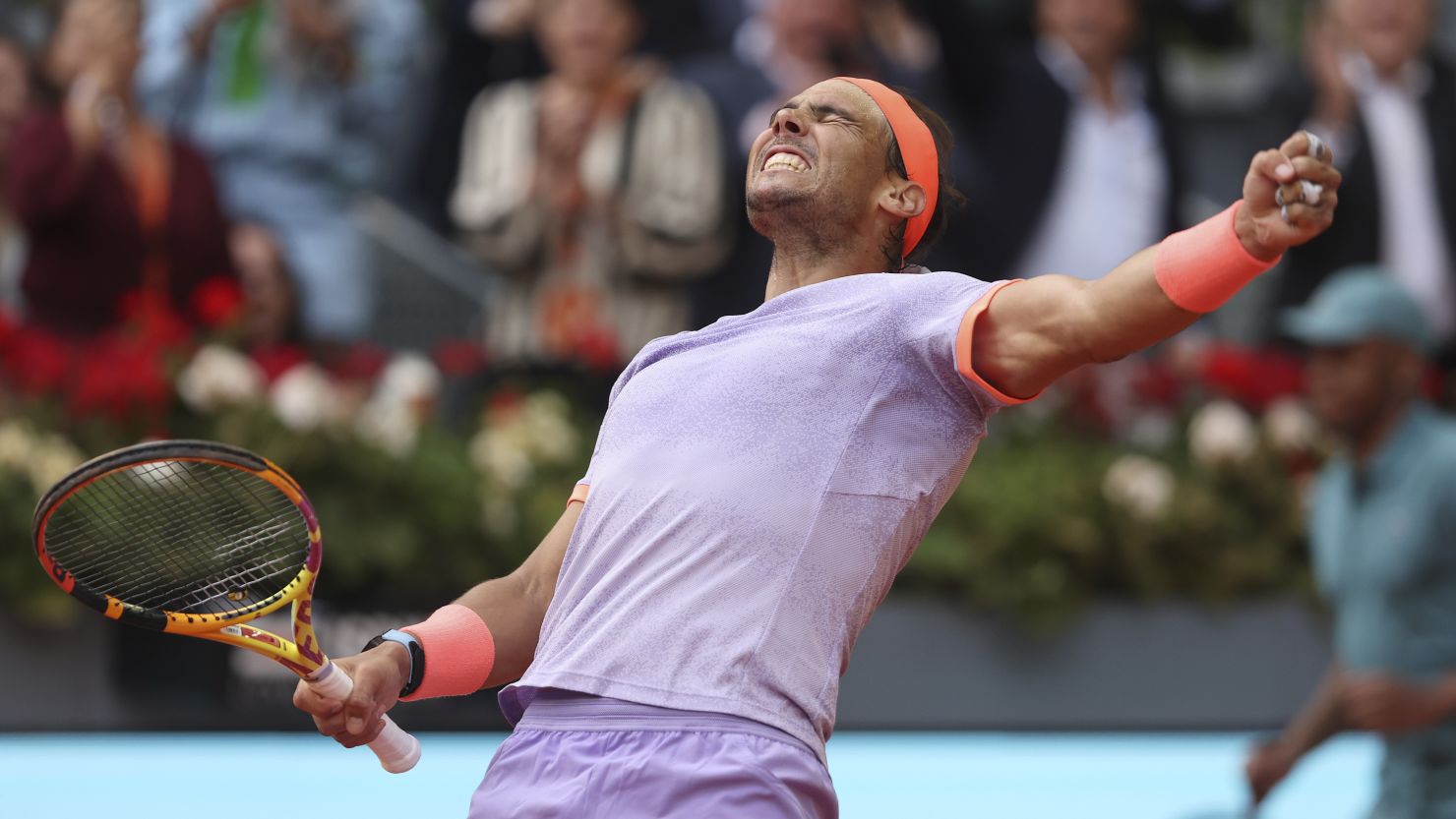Rafael Nadal’s retirement marks a pivotal moment in the world of tennis, prompting a reevaluation of his profound impact on the sport. This article explores Nadal’s contributions, from revolutionizing clay court play to inspiring a new generation of athletes. It also examines the future of tennis in the absence of one of its greatest icons, addressing the shifts in competitive dynamics, the influence on emerging players, and the evolving landscape of fan engagement.
By analyzing these key aspects, readers will gain insights into how Nadal’s legacy will shape the sport moving forward and what it means for the next generation of tennis players and fans alike.
In this article you will find:
Nadal’s Impact on Modern Tennis
Rafael Nadal has undeniably shaped the landscape of modern tennis, both on and off the court. His journey from a young prodigy to a global sports icon has not only elevated the sport’s profile but also inspired countless players and fans around the world. As we reflect on his career, it is essential to explore the multifaceted impact he has had on tennis.
Revolutionizing the Clay Court Game
One of Nadal’s most significant contributions to tennis is his mastery of clay court play. His unique style, characterized by powerful topspin and relentless baseline rallies, has set a new standard for how the game is played on this surface. Before Nadal, clay was often viewed as a slower, less aggressive surface. However, his aggressive approach has transformed it into a battleground for tactical prowess and physical endurance.
- Topspin Forehand: Nadal’s heavy topspin forehand has become a benchmark for aspiring players, showcasing the effectiveness of spin in dictating rallies.
- Defensive Skills: His remarkable defensive abilities have redefined the importance of court coverage and shot placement, making it essential for players to develop these skills.
- Physical Conditioning: Nadal’s rigorous training regimen emphasizes fitness, stamina, and resilience, inspiring a new generation to prioritize physical preparation.
Influencing the Next Generation
Nadal’s impact extends beyond his playing style; he has become a role model for young athletes. His sportsmanship, humility, and dedication to the game have resonated with fans and players alike. Many aspiring tennis stars cite Nadal as a primary influence in their decision to pursue the sport. His commitment to hard work serves as a powerful reminder that success is not merely a product of talent but also of perseverance.
Organizations and academies around the world have adopted Nadal’s principles, focusing on developing not just technical skills but also the mental fortitude required to excel at the highest levels of competition. Programs that emphasize character development alongside athletic training are becoming increasingly popular, reflecting Nadal’s holistic approach to sports.
Global Reach and Cultural Impact
Nadal’s influence transcends the tennis court, impacting global culture and the sports industry. His popularity has helped elevate tennis as a mainstream sport, drawing in diverse audiences and increasing viewership. Major tournaments featuring Nadal consistently attract record crowds and television ratings, further solidifying the sport’s place in the global sports arena.
Moreover, Nadal’s philanthropic efforts, particularly through the Rafa Nadal Foundation, have made a significant impact on communities, promoting education and sports among underprivileged youth. This commitment to giving back has inspired other athletes to engage in charitable endeavors, fostering a culture of responsibility within the sports community.
Conclusion
Rafael Nadal’s legacy in modern tennis is profound and multifaceted. From revolutionizing clay court strategies to inspiring the next generation of players, his impact is felt across the sport. As we prepare to say goodbye to this tennis legend, it is clear that his contributions will resonate for years to come, shaping the future of tennis in ways we have yet to fully understand.
For more insights on Rafael Nadal’s journey and his contributions to tennis, you can visit the ATP Tour website.
The Evolution of Rafael Nadal’s Playing Style
Rafael Nadal’s playing style is a remarkable blend of power, precision, and tactical intelligence, which has evolved significantly throughout his career. From his early days as a young talent on the ATP tour to his status as one of the greatest players of all time, Nadal’s approach to the game has adapted to meet the challenges posed by opponents, surfaces, and the physical demands of the sport.
Early Career: The Rise of a Baseline Warrior
In the early stages of his career, Nadal quickly established himself as a formidable force on the ATP tour, primarily known for his exceptional baseline play. His signature topspin forehand became a defining feature, allowing him to dominate rallies and dictate the pace of matches. This aggressive style was particularly effective on clay courts, where his ability to generate spin made him nearly unbeatable.
- Powerful Groundstrokes: Nadal’s groundstrokes were characterized by their depth and heavy spin, forcing opponents into defensive positions.
- Exceptional Footwork: His agility and foot speed enabled him to cover the court effectively, allowing for quick transitions between offense and defense.
Adapting to the Competition
As Nadal faced increasingly tougher competition, he recognized the need to adapt his style. Players like Roger Federer and Novak Djokovic brought new challenges, prompting Nadal to refine his game. This period marked a shift towards a more versatile approach, incorporating elements of serve-and-volley and net play.
- Improved Serve: Nadal worked diligently to enhance his serve, adding variety with slice and kick serves to keep opponents guessing.
- Net Play: While traditionally a baseline player, Nadal began to integrate more net approaches, showcasing his ability to finish points quickly.
Physical and Mental Resilience
One of the most striking aspects of Nadal’s evolution is his physical and mental resilience. Known for his tenacity and fighting spirit, he has often outlasted opponents in grueling matches. This resilience has become a hallmark of his playing style, allowing him to turn matches around even when facing adversity.
Nadal’s commitment to fitness has also played a crucial role in his longevity and success. His rigorous training routines focus on building strength, agility, and endurance, enabling him to compete at the highest levels well into his 30s. This dedication to physical conditioning has set a standard for professional athletes across all sports.
Modern Adaptations: Embracing Technology and Strategy
In recent years, Nadal has embraced technology and data analytics to further enhance his game. Coaches and analysts utilize video analysis to identify patterns and weaknesses in both his play and that of his opponents. This strategic approach allows him to prepare meticulously for each match, tailoring his tactics to exploit specific vulnerabilities.
Moreover, Nadal has shown an increasing willingness to adapt his style based on the surface he is playing on, showcasing his versatility. His ability to adjust his strategy, whether on clay, grass, or hard courts, speaks to his deep understanding of the game and his opponents.
Conclusion
The evolution of Rafael Nadal’s playing style is a testament to his dedication, adaptability, and relentless pursuit of excellence. From a powerful baseline player to a multifaceted competitor who can dominate on any surface, Nadal’s journey reflects the dynamic nature of tennis itself. As he bids farewell to the sport, his legacy will undoubtedly influence future generations of players who aspire to follow in his footsteps.
For more insights on Rafael Nadal’s playing style and techniques, you can explore the Tennis.com article.
Tributes and Reflections from Fellow Athletes
As Rafael Nadal prepares to bid farewell to professional tennis, the outpouring of tributes and reflections from fellow athletes highlights the profound impact he has had on the sport and its community. From rivals to teammates, many have taken the opportunity to express their admiration and respect for Nadal, celebrating not only his achievements but also his character and sportsmanship.
Messages from Rivals
Rivalries are often the heart of sports, and in tennis, few have been as iconic as that between Nadal and Roger Federer. Their matches have captivated audiences worldwide, showcasing the best of both players. Following Nadal’s retirement announcement, Federer shared a heartfelt message, emphasizing the unique bond they developed over the years.
- Roger Federer: In a poignant statement, Federer remarked, “Rafa, you have been a true champion, not just in tennis but in life. Your passion and dedication have inspired millions, and it was an honor to compete against you.”
- Novak Djokovic: Djokovic, another of Nadal’s greatest rivals, echoed similar sentiments, stating, “Rafael has raised the bar for all of us. His work ethic and determination are unmatched. We will miss him on the tour.”
Reflections from Teammates and Friends
Fellow players and friends have also shared their thoughts on Nadal’s influence. Many have highlighted his role in fostering a spirit of camaraderie among players, regardless of competition.
- Andy Murray: Murray noted, “Rafa’s humility and respect for the game have set a standard for all athletes. He has always been a fierce competitor, but also a great friend.”
- Maria Sharapova: The former champion praised Nadal’s resilience, stating, “His ability to come back from injuries and setbacks is a testament to his character. He has shown us all what it means to fight.”
Impact on the Next Generation
Nadal’s influence extends beyond his contemporaries. Young players entering the sport have cited him as a source of inspiration, and many have expressed their desire to emulate his work ethic and dedication.
- Jannik Sinner: The rising star mentioned, “Watching Nadal play has taught me so much about the game. His focus and determination are things I strive for in my own career.”
- Coco Gauff: Gauff, one of the brightest talents in women’s tennis, remarked, “Rafa has shown that with hard work and passion, anything is possible. He is a true role model.”
Legacy Beyond the Court
The tributes to Nadal also reflect his legacy beyond tennis. His philanthropic efforts, particularly through the Rafa Nadal Foundation, have made a significant impact on communities, promoting education and sports among underprivileged youth. Fellow athletes have recognized this aspect of his career, emphasizing the importance of giving back.
- Billie Jean King: The tennis legend highlighted Nadal’s contributions off the court, stating, “Rafa’s commitment to helping others is as impressive as his achievements in tennis. He has shown that athletes can make a difference.”
- Stefanos Tsitsipas: Tsitsipas noted, “Rafa’s influence goes beyond his titles. He has set an example for how athletes should conduct themselves, both on and off the court.”
Conclusion
The heartfelt tributes and reflections from fellow athletes underscore the immense respect and admiration Rafael Nadal has garnered throughout his career. As he steps away from the sport, the legacy he leaves behind is not only one of unparalleled success but also of integrity, sportsmanship, and a commitment to uplifting others. His influence will undoubtedly resonate in the world of tennis for years to come.
For further insights into the impact of Rafael Nadal on the tennis community, you can read more at Tennis.com.
The Future of Tennis Without Nadal
As the tennis world prepares for the next chapter following Rafael Nadal’s retirement, many are left contemplating the future of the sport without one of its greatest icons. Nadal’s presence has profoundly influenced not only the game itself but also its culture, fan engagement, and the competitive landscape. His departure marks the end of an era, prompting discussions about what lies ahead for tennis.
The Shift in Competitive Dynamics
With Nadal stepping away from the tour, the competitive dynamics among players are poised for a significant shift. His intense rivalries, particularly with Roger Federer and Novak Djokovic, have defined a generation of tennis. The absence of such a formidable competitor opens the door for emerging players to seize opportunities and make their mark.
- Emerging Stars: Players like Jannik Sinner, Carlos Alcaraz, and Felix Auger-Aliassime are positioned to fill the void left by Nadal. Their youth and energy bring a fresh perspective to the game, and they are eager to establish their legacies.
- New Rivalries: The landscape of rivalries is likely to evolve, with younger players potentially developing new rivalries that could captivate audiences in the same way Nadal’s did.
Impact on Clay Court Tennis
Nadal’s unparalleled success on clay courts has set a high standard for the sport. His retirement raises questions about the future of clay court tennis and whether any player can replicate his dominance. The French Open, in particular, will feel the absence of its most celebrated champion.
- Legacy of Clay Dominance: Nadal’s legacy on clay will continue to influence how players prepare for and approach the surface. His techniques and strategies will be studied and emulated by future generations.
- Potential for New Champions: While Nadal’s absence may create uncertainty, it also presents opportunities for other players to rise to prominence on clay, potentially reshaping the narrative of the surface.
Fan Engagement and Marketability
Nadal’s charisma and sportsmanship have attracted millions of fans globally, contributing to the sport’s popularity. His retirement may impact fan engagement strategies and the marketing of tennis as a whole.
- Changing Fan Dynamics: The loss of a superstar like Nadal may lead to shifts in fan loyalty and engagement, prompting tennis organizations to rethink how they connect with audiences.
- Increased Focus on New Stars: As the spotlight shifts, there will be a greater emphasis on promoting emerging talents, which could invigorate the fan base and attract new viewers.
Evolution of the Game
Nadal’s unique playing style and commitment to physical fitness have influenced how the game is played today. His retirement may lead to an evolution in playing styles as upcoming players adapt their games to the changing competitive landscape.
- New Playing Styles: With the absence of Nadal’s heavy topspin and baseline dominance, players may experiment with different strategies, potentially leading to a more varied style of play on the ATP and WTA tours.
- Focus on Fitness: Nadal’s dedication to physical conditioning has set a benchmark for athletes. Future players may continue to prioritize fitness, but they may also explore innovative training methods to gain a competitive edge.
Conclusion
The future of tennis without Rafael Nadal is both uncertain and filled with potential. While his departure leaves a significant void, it also opens up opportunities for new players to shine and redefine the sport. As the tennis community navigates this transition, the legacy of Nadal will undoubtedly continue to influence the game for years to come.
For more insights into the evolving landscape of tennis post-Nadal, you can read further at ESPN Tennis. Rafael Nadal has significantly impacted modern tennis through his mastery of clay court play, setting new standards with his powerful topspin and defensive skills. His dedication to physical conditioning and sportsmanship has inspired a new generation of players, emphasizing the importance of hard work and resilience. Nadal’s philanthropic efforts have also elevated the sport’s cultural relevance, encouraging athletes to engage in charitable endeavors.
As tennis moves forward without Nadal, emerging stars like Jannik Sinner and Carlos Alcaraz are poised to fill the competitive void. The sport may see new rivalries develop, particularly on clay courts where Nadal’s legacy will continue to influence strategies. Fans and organizations should focus on promoting these rising talents to maintain engagement and excitement in the tennis community.




